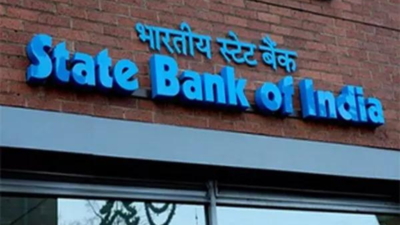SBI posts record $9.2 billion profit in FY25, driven by digital cohort

State Bank of India (SBI) reported a record profit of around USD 9.2 billion for the fiscal year ending March 2025, making it only the third Indian company—after Reliance Industries and ONGC—to feature in the Global Top 100 ranked by net profit. Despite this remarkable achievement, much of SBI’s profits are generated by a relatively small digital cohort, as highlighted by Rajendra Srivastava, considered India’s Philip Kotler, in a post on medium.com, as reported PTI.The bank’s exceptional profitability is largely attributed to its strategic shift towards digital banking, particularly through the YONO app. Launched in November 2017, YONO has become a cornerstone of SBI’s growth strategy, initially created as a response to rising fintech competition. Today, the app boasts over 74 million registered users, positioning it as one of the largest digital banking platforms in the country.Since its inception, YONO has enabled more than Rs 3.2 lakh crore in loan disbursements and has become a significant contributor to the bank’s retail loan book. The app now sees over 10 million daily logins, and approximately 65% of SBI’s savings account transactions are conducted through it.However, despite its success, YONO accounts for a small portion of SBI’s overall customer base. While the bank services over 500 million accounts, only about 14% (approximately 74 million) are active users of YONO. Srivastava pointed out that this represents a paradox: the bulk of SBI’s profits come from a small digital user base, while the remaining 370 million accounts are primarily low-margin, high-cost liabilities, many of which are dormant or low-balance accounts created for financial inclusion purposes.Srivastava also raised questions about the efficiency of SBI’s expansive network of 20,000 branches and 220,000 employees. He noted that, in an era of digital banking, India’s Digital Public Infrastructure (DPI), which includes Aadhaar, UPI, and widespread internet and smartphone access, has revolutionized financial services, allowing even rural citizens to transact seamlessly through mobile phones.“Despite record-breaking profits, SBI continues to trade at a lower Price-to-Book (P/B) ratio of 1.4 compared to its private sector peers,” Srivastava observed, highlighting that banks like HDFC Bank (P/B ratio of 2.8) and ICICI Bank (P/B ratio of 3.3) enjoy higher market valuations. This is due to their perceived agility, leaner operations, and stronger digital presence, as well as their lower capital expenditure on physical infrastructure.SBI’s discounted P/B ratio reflects investor concerns about its structural inefficiencies in asset utilization, not its financial performance, according to Srivastava. He emphasized the need for SBI to focus on expanding YONO’s reach.“With a relatively small incremental investment, SBI can convert more of its legacy customers into digital users, reducing cost-to-serve,” Srivastava suggested. He also proposed that the bank phase out underutilized physical infrastructure, such as branches and ATMs, and trim administrative costs tied to dormant accounts.By doing so, SBI could improve customer lifetime value through cross-selling within the YONO ecosystem and extend its footprint without additional capital expenditure. This, Srivastava believes, would help the bank gain strategic relevance in the competitive financial services landscape.“In future, SBI can become a beacon for all public sector companies, demonstrating that profitability, efficiency, and inclusion are not mutually exclusive,” Srivastava concluded. “Higher levels of equity capital add to resources available to compete globally. India needs more financial firepower to fuel its growth ambitions. Doing well will also enable SBI to do good for the nation.”





